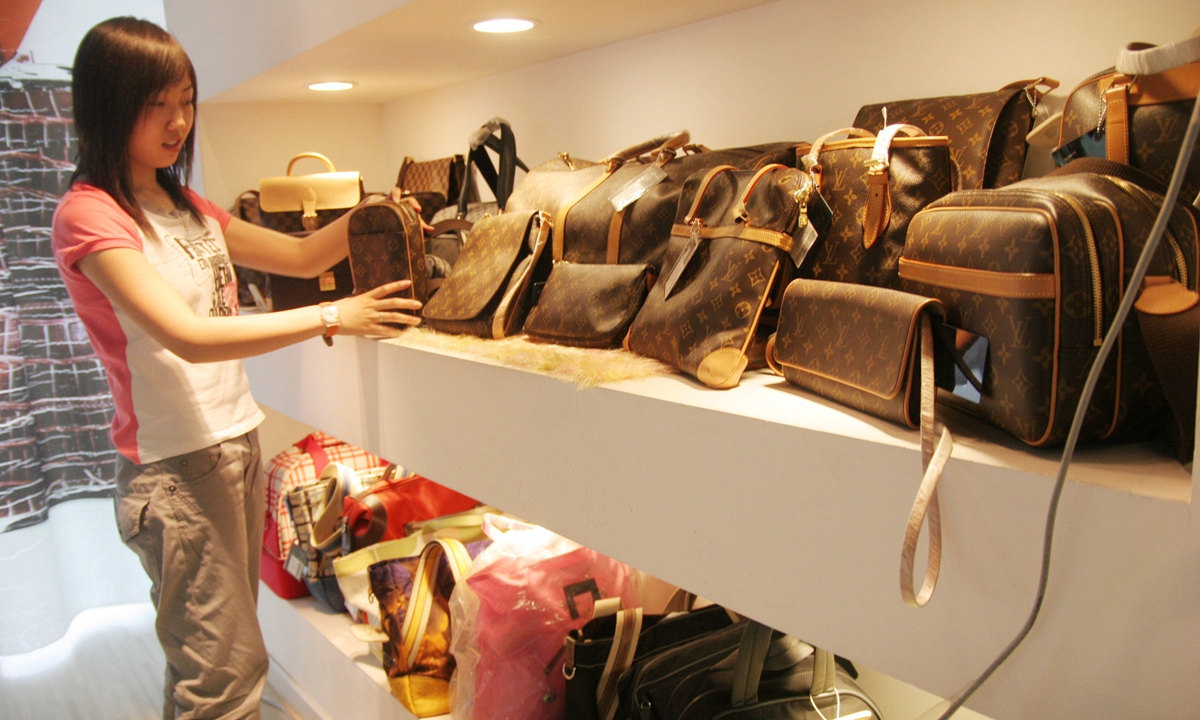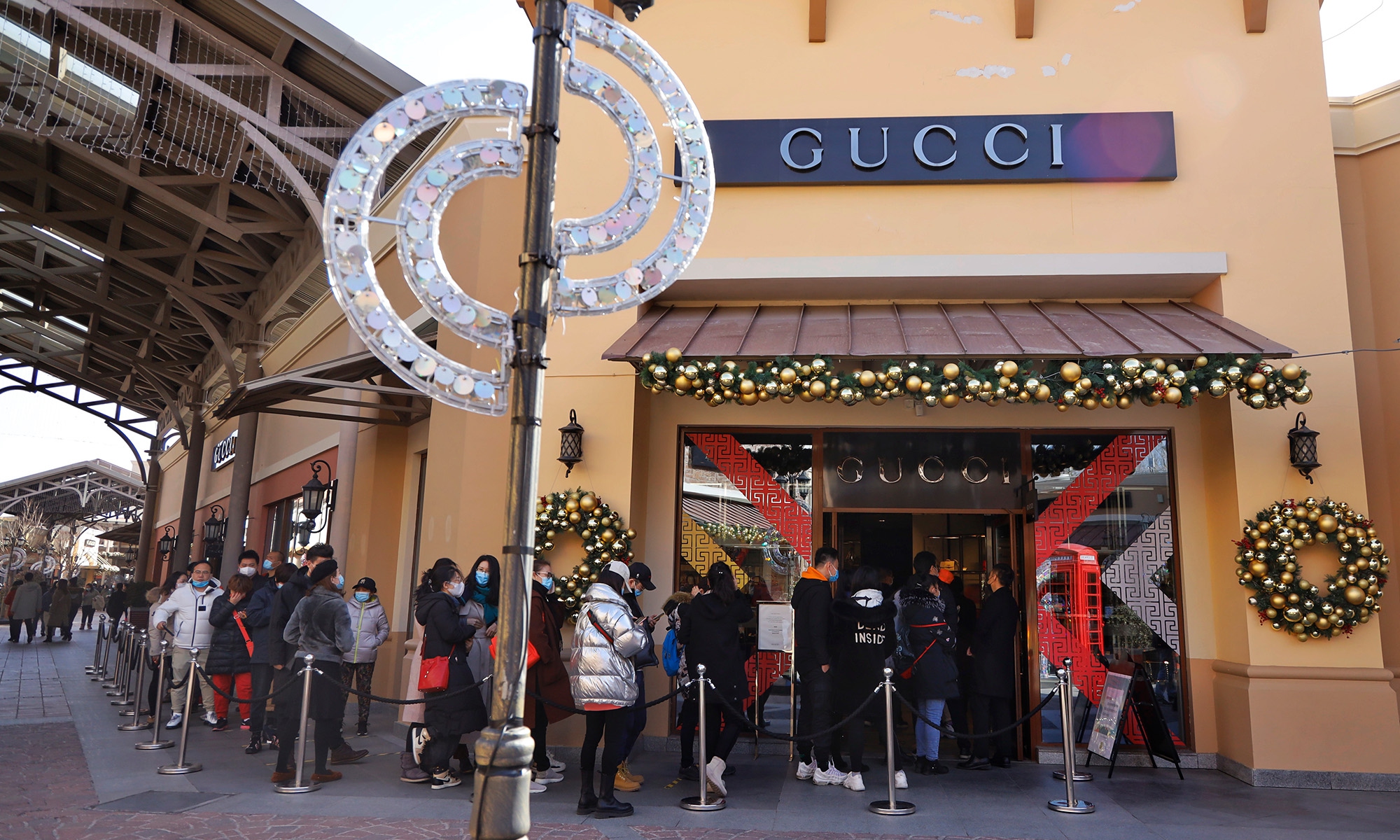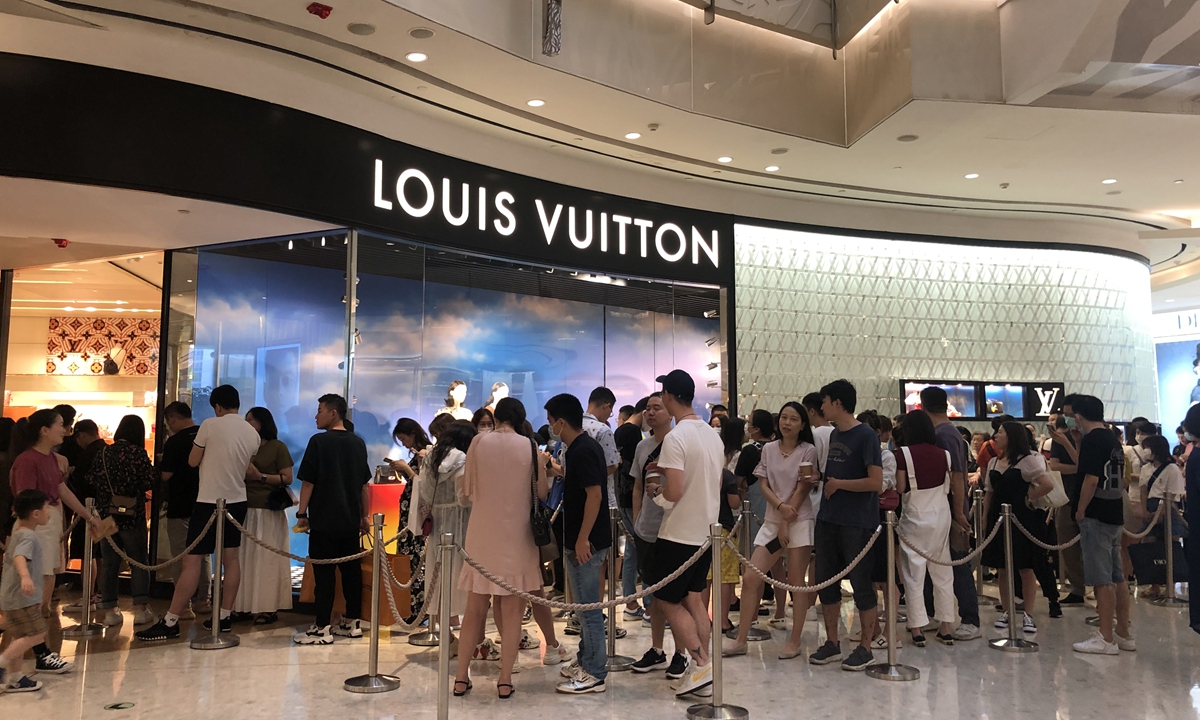
A salesperson at a second-hand luxury goods shop arranges designer handbags. File Photo: CNSPhoto
Miss Bao has a special way to kill time - shopping on second-hand luxury bag websites.
She spends hours checking the bags and likes to buy good quality luxury items at affordable prices.
Her favorite brands are Hermes, LV and Chanel. She recently bought a Burberry Banner bag for 1,899 yuan ($294), far less than the original price of about 6,000 yuan.
The second-hand luxury market has seen fast development in China, and market watchers have predicted that it could equal that of Japan in five years.
A report released by the University of International Business and Economics in June 2020 said that China's second-hand luxury market only accounts for 5 percent of the luxury market, while in some developed countries it can reach 20 to 30 percent.
Younger buyers interested
Zhang Chen, founder of Beijing-based Extraordinary Luxuries Technology Co started his second-hand business more than 10 years ago.
He said the consumers of second-hand luxury goods are not the wealthy, but white-collar workers with a monthly income of around 6,000 yuan, as they care about quality.
The buyers are young, and often buy bags priced at around 5,000 yuan, Zhang told the Global Times on Monday.
The University of International Business and Economics report said that in 2019, 50 percent of second-hand luxury goods consumers in China were aged under 30. It said luggage and leather goods were still the first choice for consumers, accounting for 60.20 percent of the transactions; followed by clothing, shoes and hats, accounting for 22.10 percent.
Epidemic brings boom
China has always been an important market for luxury goods. A report released by consultancy firm Bain & Co in November said that China will become the world's biggest luxury goods market by 2025, with Chinese consumers set to account for nearly half of the global spending in the sector.
The report said the Chinese mainland will be the only market in the world to see growth in luxury goods sales this year, with consumers buying high-end luxury bags, clothes, jewelry and wine in China due to curbs on international travel amid the ongoing pandemic.
Rising costs and falling sales due to the pandemic have caused global luxury giants to raise their prices. Chanel increased its prices for the second time last year in November, having hiked the prices of handbags and other small leather goods worldwide by between 5 percent and 17 percent in May, according to Reuters.
The economic pressure brought by the pandemic has also caused some luxury customers to sell their goods to alleviate financial problems, and customers are focusing more on cost-effective options due to the decline in income, Gu Jin, founder of chenzhen.com told the Global Times on Sunday.
As a second-hand online bag website, it started offering maintenance and repair for bags from 2015, and then entered the second-hand bag business in 2018. Gu said the second-hand bag business has grown fast in China in the last two years.
Zhang from Extraordinary Luxuries Technology Co said the company's transactions in 2020 were up about 30 percent from previous years. He predicted that China's second-hand market will continue developing rapidly.
The second Japan?
Market watchers said China will equal Japan in terms of the size of its market for second-hand luxury goods in five years.
Japan used to be the global luxury goods center thanks to its rapid economic development, but in the 1980s Japanese consumers began to cut their luxury purchases and sold their own collections, making their second-hand market develop rapidly.
Minnie, a vintage goods dealer in Dalian, Northeast China's Liaoning Province said it is now hard to find good quality vintage bags in Japan and the prices are also very high.
With the help of xiaohongshu - or Little Red Book, a popular social shopping application in China - as well as short-videos and weibo, Chinese people know more about vintage goods these days, she told the Global Times on Sunday, adding that the growing market in China has contributed to the rise in prices in Japan.
Insiders also said that buyers from Japan are now looking for second-hand bags in China.
Japan is almost at the end of its second-hand market boom, Zhang said, adding that "China could be the second Japan in terms of market size in five years."




